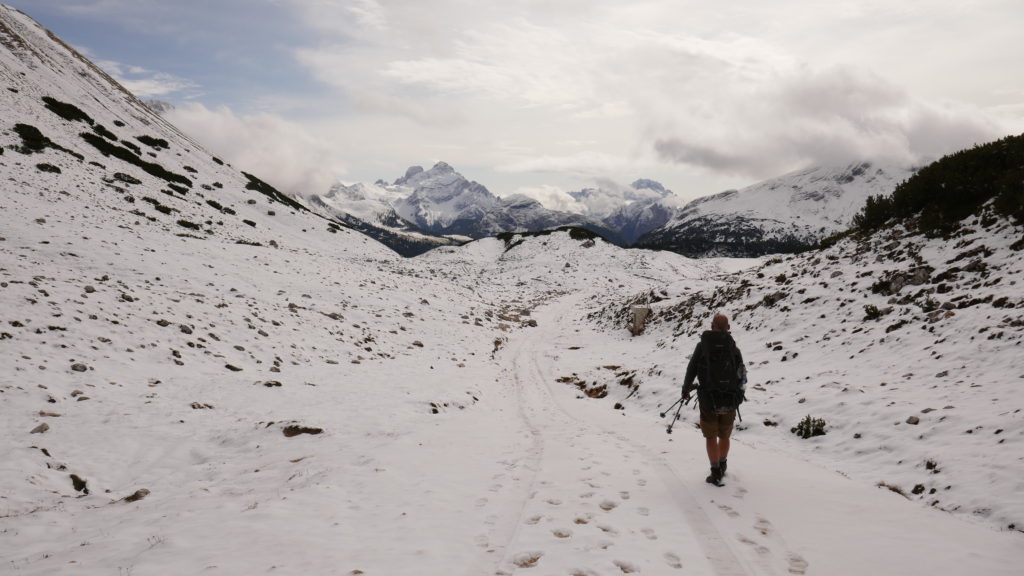In the heart of winter, as the world transforms into a breathtaking spectacle of shimmering ice crystals and pristine snow, a thrilling adventure awaits those seeking a truly extraordinary hiking experience. Amidst the cold and seemingly inhospitable landscape, only the fearless venture forth, drawn by the promise of unparalleled beauty, self-discovery, and triumph in the captivating world of winter hiking.

The Possibility of Hiking During the Winter Season
As the icy fingers of winter extend their reach, you may find yourself wondering if hiking is still a viable outdoor pursuit during this frosty season. The answer, resoundingly, is yes! Despite the cold and snow, hiking during winter can be an exhilarating and rewarding experience, revealing a whole new world of natural beauty and adventure.
While it’s true that winter hiking requires additional preparation and consideration compared to other seasons, the possibilities it offers are well worth the effort. Before venturing out into the snowy landscapes, there are a few essential factors to bear in mind:
- Preparedness is Key. Winter conditions can be unpredictable, so thorough preparation is essential for a safe and enjoyable hike. Dressing in layers with moisture-wicking fabrics, wearing waterproof and insulated footwear, and donning a warm hat and gloves are crucial to staying comfortable and protected from the cold.
- Know the Terrain and Trail Conditions. Before setting out, research your chosen trail’s conditions and accessibility during winter. Some hiking paths may be closed or more challenging due to snow and ice. Opt for well-marked and frequently traveled trails for added safety.
- Gear Up. Carrying the right gear is vital for winter hiking. Items such as a map, compass, or GPS device, as well as a first aid kit, headlamp, and extra food and water, should be part of your hiking essentials. Depending on the conditions, traction aids like crampons or microspikes can also be valuable for maintaining stability on icy surfaces.
- Check the Weather. Winter weather can change rapidly, so it’s crucial to check the forecast before heading out. Avoid hiking during storms or when severe weather warnings are in effect.
- Hiking with a Group. Hiking with a companion or a group during winter can enhance safety and provide a source of support in case of an emergency.
- Environmental Awareness. Respect the natural environment and its wildlife during winter. Some animals are in hibernation or struggling to find food, so maintaining a safe distance and adhering to Leave No Trace principles are essential.
Essential Gear for Winter Hiking
Winter hiking can be a beautiful and rewarding experience, but it also requires careful preparation and the right gear to stay safe and comfortable in cold and potentially harsh conditions. Here’s a list of essential gear for winter hiking:
- Insulated Winter Boots. Waterproof, insulated boots with good traction are essential to keep your feet warm and dry while navigating snowy and icy trails.
- Wool or Synthetic Socks. Choose moisture-wicking and warm socks to keep your feet dry and prevent blisters.
- Gaiters. Gaiters are protective coverings worn over your boots and lower legs to keep snow, debris, and moisture out.
- Layered Clothing. Wear moisture-wicking base layers to keep sweat away from your body, insulating mid-layers to retain body heat, and a waterproof and windproof outer layer to protect against the elements.
- Insulated Jacket. A warm, insulated jacket or parka is crucial for staying warm during rest breaks and in colder conditions.
- Winter Pants. Choose insulated and waterproof pants or snow pants to keep your legs warm and dry.
- Gloves or Mittens. Insulated gloves or mittens are essential to protect your hands from the cold. Consider bringing an extra pair in case one gets wet.
- Hat or Beanie. A warm hat that covers your ears is essential to retain body heat, as a significant amount of heat can be lost through the head.
- Sunglasses. Snow can be blindingly bright, so protect your eyes from harmful UV rays and glare with quality sunglasses.
- Navigation Tools. Winter conditions can make trail markers difficult to spot, so bring a map, compass, or GPS device to help you stay on track.
- Trekking Poles. These provide stability and help reduce stress on your knees, especially while hiking on uneven or slippery terrain.
- Headlamp or Flashlight. Days are shorter in winter, so bring a reliable light source in case you end up hiking in the dark.
- Backpack. Choose a spacious and comfortable backpack to carry your gear. Look for one with additional straps to attach snowshoes or other gear if needed.
- Food and Water. Carry high-energy, non-perishable snacks, and plenty of water. Insulated water bottles or a thermos can help prevent water from freezing.
- Emergency Kit. Include essential items like a first aid kit, fire-starting supplies, emergency shelter (like a space blanket), and a multi-tool.
- Sunscreen and Lip Balm. Protect your skin from the sun’s rays, which can still be damaging in winter, especially at higher altitudes.
- Hand and Foot Warmers. These disposable warmers can provide extra comfort on extremely cold days.
- Mobile Phone and Portable Charger. Keep your phone fully charged and carry a portable charger to stay connected in case of emergency.
Enjoy the Best of Winter Through Hiking Activities
Whether you are a seasoned hiker looking for a fresh perspective or a beginner eager to embark on a novel adventure, embracing the possibility of hiking during the winter season promises an unforgettable journey. The transformative power of nature during this time touches the soul, leaving hikers with cherished memories and a profound appreciation for the magic of winter’s embrace.
So as the snowflakes gently fall, and the world around you transforms into a glistening wonder, consider the possibility of stepping outside, lacing up your boots, and immersing yourself in the splendor of winter hiking. The experience will undoubtedly leave you with a new perspective on the colder months and a deep connection to the untamed beauty of the natural world.